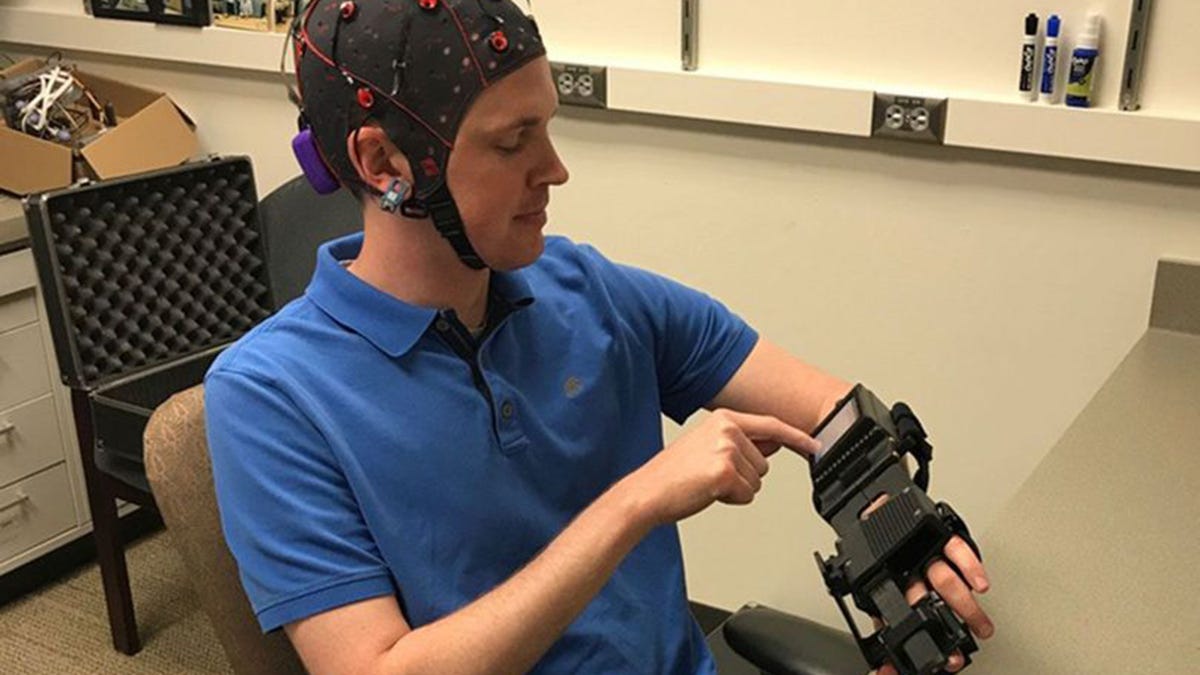Mind-controlled glove teaches stroke patients to move again
A wearable robotic glove makes use of brain signals to help stroke patients restore the use of their hands.

Medical resident Jarod Roland wearing the Ipsihand.
Stroke recovery is an intense process. After the brain has been damaged, it can take months or years for stroke survivors to relearn the skills lost. Now, a new device can help stroke survivors regain the use of their hands.
It's called the Ipsihand, developed by scientists at the Washington University School of Medicine in St. Louis. The results of the trial have been published in the journal Stroke, explaining how the Ipsihand helps reroute control of the hand to an undamaged part of the brain.
The process involves a glove or brace that fits over the hand, a non-invasive electroencepahalography cap (or cap fitted with electrodes that detect the electrical signals of brain activity) and a computer that amplifies those signals
"We have shown that a brain-computer interface using the uninjured hemisphere can achieve meaningful recovery in chronic stroke patients," said co-senior author Eric Leuthardt in a statement.
So how does the Ipsihand work?
Your hands are controlled by the opposite side of the brain. So when you move your right hand, it's the left hemisphere of the brain that comes alive with activity. If the left hemisphere is damaged, you'll have trouble controlling your right hand.
In a healthy person, a split second before the left hemisphere of the brain becomes active to move the right arm, the right hemisphere shoots off electrical signals, indicating the intent to move. It's these intention signals that scientists harness with the Ipsihand system.
"The idea is that if you can couple those motor signals that are associated with moving the same-sided limb with the actual movements of the hand, new connections will be made in your brain that allow the uninjured areas of your brain to take over control of the paralyzed hand," Leuthardt said.
To make these new connections, Ipsihand's cap detects the intention signals to open or close the hand, then the computer amplifies them. The brace then opens or closes in a pincer-like grip with the hand inside, bending the fingers and thumb to meet.
Ten patients of 13 recruited finished the program, using the Ipsihand for 10 minutes to two hours a day, five days a week for 12 weeks. After 12 weeks, the patients had improved an average of 6.2 points on a 57-point scale evaluating motor skills. Leuthardt said this increase represents a "meaningful improvement" in quality of life.
"As the technology to pick up brain signals gets better, I'm sure the device will be even more effective at helping stroke patients recover some function," co-senior author Thy Huskey said.
Tech Enabled: CNET chronicles tech's role in providing new kinds of accessibility.
Technically Literate: Original works of short fiction with unique perspectives on tech, exclusively on CNET.

